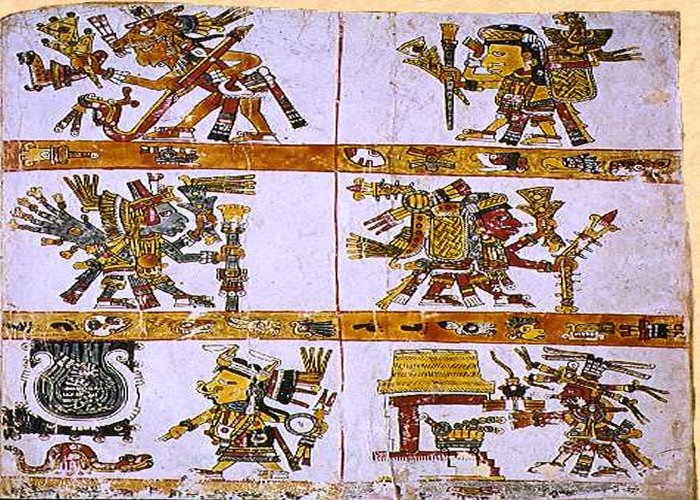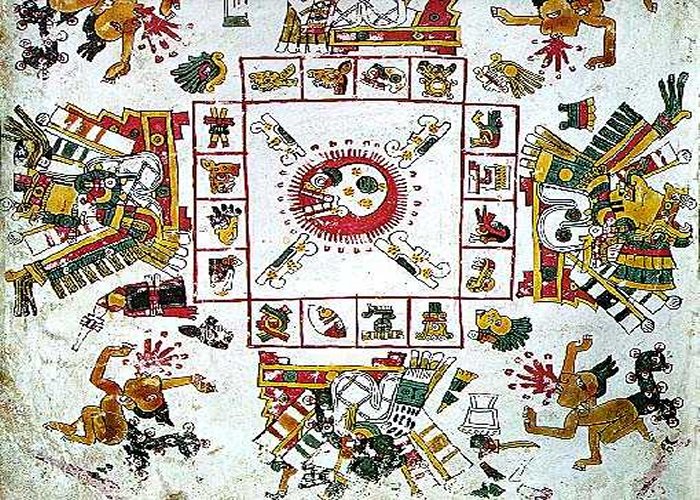A. Sutherland - AncientPages.com - The Codex Borgia (or Codex Yoalli Ehēcatl) has a somewhat obscure past.
There is a special group of mostly pre-Columbian manuscripts that originate from central Mexico. These documents have either religious or historical significance.
However, the pre-Columbian codices of the Mixtec people of the state of Oaxaca in the southern part of the Republic of Mexico, are known as having geographical and historical content.
The place of origin and the linguistic identity of the creators of the codices have been the subject of considerable debate.
The documents were first identified by Eduard Seler (1849- 1922), a prominent German anthropologist, ethnohistorian, linguist, epigrapher, academic and Americanist scholar, who focused on the study of pre-Columbian era cultures in the Americas.
The Codex Borgia is a Mesoamerican ritual and divinatory document, which was probably written before the Spanish conquest of Mexico, somewhere within what is now southern or western Puebla. It is difficult to read and interpret this codex the way it was done by ancient Aztec priests.
See also:
Ehecatl: The Snake-Bird Deity And God Of Wind Feared And Respected By The Aztecs
According to one suggested explanation, the codex was rescued from a public burning of "superstitious and idolatrous" books in Mexico, in 1762, by a former member of the Congregation for the Evangelization of Peoples (Latin: Congregatio pro Gentium Evangelizatione) in Rome, responsible for missionary work.
Thus the Codex Borgia ended up in the hands of Cardinal Stefano Borgia in Rome and later, it was acquired by the Vatican Library; the Codex Borgia was digitally scanned and made available to the public. Others have suggested that the codex came to Italy with the exclusion of Jesuits from Spain in 1767.
The codex, written in very complex pictorial script is made of animal skins folded into 39 sheets. Each sheet is a square 27 cm by 27 cm (11x11 inches), for a total length of nearly 11 meters (35 feet). All but the end sheets are painted on both sides, providing 76 pages. The codex is read from right to left.
Codex Borgia, pre-Columbian painted manuscript. The exact place of origin of this codex is not known, however, there is no doubt, that it originates from the central Mexican highlands (possibly near Puebla or the Tehuacán Valley), an area which was under Aztec rule at the time of the conquest.
The Bordia Codex represents both a complex ritual cult (associated with the only one town, Cholula) and the calendar of Mixteca. Like other Mesoamerican cultures, the Mixtec used a 260-day sacred calendar. The tonalpohualli (in Nahuatl Aztec language, means "count of days") is an Aztec version of this 260-day calendar, used widely in pre-Columbian Mesoamerica.
A day is a combination of a number, called the coefficient, and a day sign.
This calendar is neither solar nor lunar,
The scenes depicted in the codex are painted on both sides and painted over with a white gips och krita (gesso). They are read from top to bottom and one must rotate the manuscript 90 degrees in order to view the codex correctly. The Codex Borgia is organized into a screen-fold. Single sheets of the hide are attached as a long strip and then folded back and forth.
The Codex Borgia has eighteen pages devoted to astronomical descriptions related to the rainy and dry season. The longest sequence of the codex is enigmatic and unique; it could be an important account of historical events, probably related to Teotihuacan and Tula and many rituals and ball games.
Written by – A. Sutherland - AncientPages.com Senior Staff Writer
Copyright © AncientPages.com All rights reserved. This material may not be published, broadcast, rewritten or redistributed in whole or part without the express written permission of AncientPages.com
Expand for referencesReferences:
Diaz G. The Codex Borgia: A Full-Color Restoration of the Ancient Mexican Manuscript







